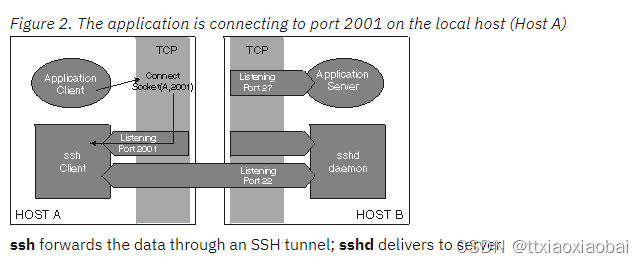- 全球覆盖与跨境网络优化:SD-WAN如何助力跨国企业应对通信挑战
北极光SD-WAN组网
网络
随着全球化的深入发展,跨国企业的业务布局日益广泛,但随之而来的跨境网络通信问题却成为企业数字化转型的难点之一。传统广域网(WAN)架构在面对复杂的跨境通信环境时,常常暴露出高延迟、不稳定以及数据隐私合规性不足的问题。而SD-WAN(软件定义广域网)作为一种新兴的网络解决方案,凭借其智能化、灵活性和安全性,逐渐成为跨国企业的首选方案。一、SD-WAN是否具备全球范围内的覆盖能力?SD-WAN通过其分
- 稳定性与高可用性:SD-WAN如何保障链路故障下的业务连续性
稳定性与高可用性是现代企业网络的核心要求,尤其是在数字化转型和全球化进程中,任何网络中断都可能导致业务停滞甚至经济损失。传统网络架构对链路故障和运营商问题的应对能力较弱,而SD-WAN(软件定义广域网)以其智能化的架构设计和实时动态管理能力,成为保障业务连续性的理想选择。本文将从以下几个方面探讨SD-WAN如何通过冗余、故障转移和快速恢复技术,确保企业网络的稳定性和高可用性。一、SD-WAN如何确
- 如何搭建分公司到总部的专线网络?(SD-WAN双链路冗余+加密隧道配置全流程)
北极光SD-WAN组网
网络
#如何搭建分公司到总部的专线网络?(以北京→上海为例)在现代企业的网络架构中,分支机构与总部之间的高效、安全、稳定的网络通信是至关重要的。构建一条可靠的专线网络不仅能保障业务数据的高效传输,还能提升整体运营效率。本文将以北京到上海的分公司到总部为例,详细解析搭建专线网络的四步流程:**选服务商**→**部署SD-WAN设备**→**配置加密隧道**→**设置业务优先级策略**。##一、选服务商:选
- 跨区域组网如何支撑多监控点高效运营?—智能SD-WAN技术解析
北极光SD-WAN组网
网络
在连锁门店、工业园区、物流仓储等场景中,跨区域部署监控系统已成为企业数字化转型的重要组成部分。要实现总部实时查看各地监控画面、保障数据传输的稳定性和安全性,并同时满足成本和扩展需求,传统的组网方式正逐渐显现其局限性。本文将从技术角度出发,深入解析跨区域组网的常见痛点,并探讨如何通过智能SD-WAN技术实现高效的多监控点管理,助力企业构建灵活可靠的监控网络。一、多监控点组网的核心痛点与解决思路随着企
- SD-WAN在智能仓储与物流管理中的应用解析:赋能制造业数字化转型
随着工业4.0与供应链数字化的推进,制造业在仓储与物流管理方面面临着前所未有的挑战和机遇。为实现仓储系统与生产系统、供应链系统的高度联动,网络的可靠性、灵活性和实时性成为关键问题。SD-WAN(软件定义广域网)技术凭借其高效、智能的网络管理能力,为智能仓储与物流管理提供了全新解决方案。在制造业中,仓储与物流管理是连接生产系统与供应链系统的重要环节,其高效运作直接影响到企业的生产效率和市场竞争力。随
- SD-WAN 是否支持固定 IP?深度解析企业网络架构中的关键问题
北极光SD-WAN组网
网络tcp/ip架构
近年来,随着企业数字化转型的深化,SD-WAN(软件定义广域网)因其灵活性、高效性和成本优化而备受关注。许多企业在部署SD-WAN时,会产生这样一个疑问:**SD-WAN是否提供固定IP?能否满足对固定IP的需求?**本文将从技术原理、应用场景和具体实现等角度深入探讨这个问题,帮助企业在网络架构设计中做出明智选择。##一、SD-WAN的技术背景与架构SD-WAN是一种基于软件定义网络(SDN)技术
- 远程光伏电站网络解决方案:SD-WAN与传统方式的双剑合璧
北极光SD-WAN组网
网络
在“双碳”目标驱动下,光伏行业迎来了爆发式增长。然而,光伏电站由于数量多、分布广且位置偏远,其远程运维管理面临巨大挑战。传统的网络接入方式(如VPN和专线)虽然成熟稳定,但在成本、灵活性和扩展性上存在明显不足。而近年来兴起的**SD-WAN(软件定义广域网)**技术,凭借其智能化、敏捷性和成本优势,为光伏行业提供了更为灵活高效的网络解决方案。但从实际场景来看,完全“抛弃”传统方式并不可取,而是需要
- Win10自定义指南:隐藏“我的电脑”中的默认文件夹.zip
小馬锅
本文还有配套的精品资源,点击获取简介:在Windows10中,“我的电脑”提供了一个访问和管理本地资源的界面。本文介绍了如何通过修改注册表或使用第三方工具自定义该界面,移除默认的六个文件夹快捷方式,使“我的电脑”界面更符合个性化需求。这包括了注册表编辑的具体步骤和使用第三方软件的建议。文章强调了操作的谨慎性,并说明了如何通过反向操作恢复默认设置。1.Windows10中的“我的电脑”界面自定义1.
- 读芯片信息出错3_简单说说汽车MCU有关security信息安全功能
weixin_39617685
读芯片信息出错3
汽车生态系统正在快速发展,新的连接技术将推动汽车进入物联网领域,其好处与威胁并存。随着每辆车的电子控制单元(ECU)的数量增加,以及汽车与互联网,用户以及彼此之间的连接,其复杂性和攻击面呈指数级增长。空中远程诊断和软件更新,紧急呼叫,互联网服务,车载支付,移动应用以及信息娱乐和交通信息等新功能都增加了车辆的攻击面。汽车电子网络安全标准化白皮书(2018)中,通过对近年来出现的各类汽车安全事件的搜集
- OKHttp框架
一个快乐的小测试
自动化测试okhttpandroidjava自动化
一、OKHttp简介初识OKHttpOkHttp是一个处理网络请求的开源项目,是Android端一个较新的轻量级网络框架,支持HTTP/HTTPS协议、请求头设置、响应解析等功能,并且支持异步调用,因此在接口测试中也是一种非常优秀的选择。OkHttp是一个高效的HTTP客户端,其特性包括:支持HTTP/2,并且允许同一个主机地址的所有请求共享同一个socket连接,这样能减少服务器的请求次数通过连
- 韶音科技嵌入式面试题及参考答案
大模型大数据攻城狮
科技单片机嵌入式硬件八股文面试牛客网大厂面试C++11
Bootloader的启动流程是什么?Bootloader是在操作系统内核运行之前运行的一段小程序。它的启动流程主要分为以下几个阶段。首先是硬件初始化阶段。这个阶段会对处理器以及一些关键的硬件设备进行初始化。比如,会配置处理器的工作模式、设置堆栈指针等。以ARM处理器为例,会设置处理器进入SVC(管理)模式,这是因为在这个模式下能够访问系统的所有资源,方便后续对硬件进行初始化。还会初始化一些基本的
- C8051F单片机在三轴伺服转台动力学模型与伺服算法仿真中的应用【附设计】
自动化设计|控制系统|毕业设计指导|工业自动化解决方案✨专业领域:程序设计与调试工业自动化控制系统HMI人机界面开发工业传感器应用电气控制系统设计工业网络通信擅长工具:西门子S7系列编程三菱/欧姆龙应用PIC单片机触摸屏界面设计电气CAD制图工业现场总线技术自动化设备调试主要内容:控制系统设计工业自动化方案规划电气原理图绘制控制程序编写与调试毕业论文指导毕业设计题目与程序设计✅具体问题可以私信或查
- 基于PLC的自动化立体仓储系统设计【附数据】
拉勾科研工作室
自动化运维
PLC自动化设计|毕业设计指导|工业自动化解决方案✨专业领域:PLC程序设计与调试工业自动化控制系统HMI人机界面开发工业传感器应用电气控制系统设计工业网络通信擅长工具:西门子S7系列PLC编程三菱/欧姆龙PLC应用触摸屏界面设计电气CAD制图工业现场总线技术自动化设备调试主要内容:PLC控制系统设计工业自动化方案规划电气原理图绘制控制程序编写与调试毕业论文指导毕业设计题目与程序设计✅具体问题可以
- STM32+ESP8266连接网络的几种方法
op:)
stm32stm32嵌入式
1、SmartConfig上篇文章提到的2、连接固定的路由在程序中写死;例如:voidESP8266_Init_Fixed_WiFi(void){ESP8266_Clear();/*AT测试*/printf("0.AT\r\n");ESP8266_SendCmd("AT\r\n","");delay_ms(500);/*重启*/printf("1.RST\r\n");ESP8266_SendCmd
- 【半夜爬起来学python】零基础学习Pygame|第一期|知识点+小球反弹游戏案例
奈樱.
python(pygame)pygame学习游戏pip
一.安装PygamePygame是跨平台Python模块,很多编译器不会向用户提供该模块,需要我们自己安装。安装步骤:打开Pygame官网:www.pygame.org点击PYGAME2.6.0-25JUN,2024下载好之后,解压压缩包,安装路径最好放在c盘里Administrator文件里在菜单栏点击搜索,输入cmd,找到“命令提示符”输入命令pipinstallpygame运行的时候会发现命
- SocketDebuggerFree-v2_00 的使用教程
yunquantong
socket
下面是SocketDebuggerFree-v2_00的使用教程,帮助你从零开始使用它来测试与调试网络Socket连接。什么是SocketDebuggerFree-v2_00?SocketDebuggerFree-v2_00是一款免费的网络调试工具,可以模拟TCP/UDP服务器或客户端,帮助你测试网络应用程序,分析数据传输,定位网络问题。功能概览✅模拟TCP/UDPServer或Client✅实时
- SQL Server 中的 GO 及其与其他数据库的对比
杨云龙UP
三大数据库学习数据库sqlserversqlOracleoracleMySQLmysql
在SQLServer中,GO不是SQL语言的一部分,而是一个批处理分隔符,用于分隔脚本中的多个SQL语句或执行块。它由SQLServerManagementStudio(SSMS)等工具处理,用来指示执行一个批次的SQL语句。1、SQLServer中的GO作用分隔批次(处理多批次脚本):将SQL脚本中的语句分成多个批次执行。每个GO表示一个独立的执行块。例如,在某些操作中,创建表的语句可能依赖于先
- [redis系列] redis脚本
en-route
redis数据库
介绍RedisLua脚本功能使得用户能够在Redis服务器端执行自定义的Lua脚本,从而实现更高效、更灵活的数据操作。Lua脚本运行在Redis服务器内部,这意味着你可以减少客户端与服务器之间的通信开销,并且可以通过原子操作确保多个Redis命令的执行一致性。组合功能:Lua脚本能够将Redis中的简单命令组合起来,从而实现复杂的业务需求,避免多次网络往返。数据操作原子性:通过Lua脚本,开发者可
- 【vue.js之夯实基础-3】TypeScript 入门之简介
alwarse
vuejstypescriptjavascriptvue.js
教程实例参照->入门教程详细教程参照->详细教程完全教程->完全教程什么是TypeScriptTypedJavaScriptatAnyScale.添加了类型系统的JavaScript,适用于任何规模的项目。TypeScript的特性类型系统从TypeScript的名字就可以看出来,「类型」是其最核心的特性。我们知道,JavaScript是一门非常灵活的编程语言:它没有类型约束,一个变量可能初始化时
- embedding模型有哪些?如何选择合适的embedding模型?
行云流水AI笔记
embedding
embedding模型是一种将数据映射到低维空间的模型,常用于自然语言处理、推荐系统、图像识别等领域。以下是一些常见的embedding模型:Word2Vec:CBOW(ContinuousBag-of-Words):通过上下文预测中心词。Skip-Gram:通过中心词预测上下文。GloVe(GlobalVectorsforWordRepresentation):结合了词频统计和Word2Vec的
- 强化学习 16G实践以下是基于CQL(Conservative Q-Learning)与QLoRA(Quantized Low-Rank Adaptation)结合的方案相关开源项目及资源,【ai技】
行云流水AI笔记
开源人工智能
根据你提供的CUDA版本(11.5)和NVIDIA驱动错误信息,以下是PyTorch、TensorFlow的兼容版本建议及环境修复方案:1.版本兼容性表框架兼容CUDA版本推荐安装命令(CUDA11.5)PyTorch11.3/11.6pipinstalltorchtorchvisiontorchaudio--extra-index-urlhttps://download.pytorch.org/
- 生成式人工智能实战 | 深度卷积生成对抗网络(Deep Convolutional Generative Adversarial Network, DCGAN)
盼小辉丶
生成式人工智能实战150讲人工智能生成对抗网络神经网络
生成式人工智能实战|深度卷积生成对抗网络0.前言1.模型与数据集分析1.1模型分析1.2数据集介绍2.构建DCGAN生成人脸图像2.1数据处理2.2模型构建2.3模型训练0.前言深度卷积生成对抗网络(DeepConvolutionalGenerativeAdversarialNetworks,DCGAN)是基于生成对抗网络(ConvolutionalGenerativeAdversarialNet
- 深度学习实战:基于嵌入模型的AI应用开发
AIGC应用创新大全
AI人工智能与大数据应用开发MCP&Agent云算力网络人工智能深度学习ai
深度学习实战:基于嵌入模型的AI应用开发关键词:嵌入模型(EmbeddingModel)、深度学习、向量空间、语义表示、AI应用开发、相似性搜索、迁移学习摘要:本文将带你从0到1掌握基于嵌入模型的AI应用开发全流程。我们会用“翻译机”“数字身份证”等生活比喻拆解嵌入模型的核心原理,结合Python代码实战(BERT/CLIP模型)演示如何将文本、图像转化为可计算的语义向量,并通过“智能客服问答”“
- 中国地图分幅编号计算工具
红衣大叔
gisjavascript分幅
fenfu中国地图分幅编号计算工具,符合GB/T13989-2012国家标准。支持单点计算和范围查询,适用于测绘、GIS开发、城市规划等场景。特性✅支持8种比例尺(100万至5000)✅单点坐标转图幅编号✅矩形范围批量图幅查询✅自动处理高纬度特殊分幅规则✅输入验证与错误处理✅TypeScript类型支持安装npminstallfenfu#或yarnaddfenfu使用示例1.单点计算constMa
- uniapp uts 插件开发指南
ReyZhang
uniappios原生插件与混合开发教程uni-apputs插件开发
一、了解基本概念1.什么是uts语言?官方:uts,全称unitypescript,统一、强类型、脚本语言。它可以被编译为不同平台的编程语言,如:web平台,编译为JavaScriptAndroid平台,编译为KotliniOS平台,编译为Swift(HX3.6.7+版本支持)harmonyOS平台,编译为ArkTS(HX4.22+版本支持)在现有架构下,ArkTS和JS在同一环境下执行,不涉及通
- 我的创作纪念日
BoAiB
其他
机缘起初,只是因为这个平台学习知识很方便,慢慢的有了记录自己“成长”的想法,也很想一直坚持下去。收获获得了100+粉丝的关注获得了6000+正向的反馈,如赞、评论、阅读量等关注了许多榜样大神学习习惯也变得更好了,会很认真仔细的记录自己的收获,也很开心能被大家认可我的分享日常创作已经是我生活的一部分了一边学习,一边实践,一边记录以前总觉得,做笔记太浪费时间了,总觉得实践才是硬道理,现在想想,真是愚昧
- Python代理池的构建与应用:实现高效爬虫与防封禁策略
程序员威哥
python爬虫开发语言
在进行大规模网络数据抓取时,IP封禁是最常见的反爬虫手段之一。为了应对这一挑战,代理池成为了一个重要工具。通过构建代理池,爬虫程序可以随机切换代理IP,避免同一IP被频繁访问而导致封禁,确保数据抓取任务的稳定性和持续性。本文将详细介绍如何使用Python构建一个高效的代理池,并结合实际应用场景,讲解如何使用代理池提升爬虫的抓取能力和防封禁策略。一、代理池的工作原理代理池的基本工作原理是,爬虫请求时
- 推荐几本创业者需要掌握的财务管理类书籍
AI布道师阿彬
单独的博客资料创业者财务管理书籍推荐创业
作为创业者,需要建立一个坚实的财务和管理知识体系。这不仅仅是“看书”,而是通过阅读经典来构建商业思维框架。以下是精心挑选的一系列书籍,并按照从**“入门认知”到“高手进阶”**的逻辑进行分类,每本书都附上了推荐理由,确保它们能精准地解决创业者在创业不同阶段可能遇到的问题。第一部分:财务思维篇(让您看懂钱、管好钱、用好钱)对于技术出身的创始人来说,财务知识不是为了让您成为会计,而是为了让您拥有**“
- Winrar X64_V6.24_win10/win11
Malwolf
winrar
SW_WinRAR_W11_64_V6240_20231108R.zipwinrar解压工具,免费版,无需破解,也不是破解版的,国内硬件大厂提供的官方版本。
- Fiddler抓包工具在多端调试中的实战应用:结合Postman与Charles构建调试工作流
2501_91600747
httpudphttpswebsocket网络安全网络协议tcp/ip
在如今前后端分离、接口驱动开发逐渐成为主流的背景下,开发者越来越依赖于各类调试工具,以应对复杂的网络请求管理、多设备调试和跨团队协作等问题。而在诸多网络分析工具中,Fiddler抓包工具以其功能全面、扩展灵活、支持HTTPS抓包和断点调试等特性,在开发者圈中拥有稳定的口碑。本文将从一个更贴近日常开发流程的角度,探讨如何在多端调试、接口测试、数据模拟等环节中,灵活运用Fiddler,并与Postma
- ASM系列五 利用TreeApi 解析生成Class
lijingyao8206
ASM字节码动态生成ClassNodeTreeAPI
前面CoreApi的介绍部分基本涵盖了ASMCore包下面的主要API及功能,其中还有一部分关于MetaData的解析和生成就不再赘述。这篇开始介绍ASM另一部分主要的Api。TreeApi。这一部分源码是关联的asm-tree-5.0.4的版本。
在介绍前,先要知道一点, Tree工程的接口基本可以完
- 链表树——复合数据结构应用实例
bardo
数据结构树型结构表结构设计链表菜单排序
我们清楚:数据库设计中,表结构设计的好坏,直接影响程序的复杂度。所以,本文就无限级分类(目录)树与链表的复合在表设计中的应用进行探讨。当然,什么是树,什么是链表,这里不作介绍。有兴趣可以去看相关的教材。
需求简介:
经常遇到这样的需求,我们希望能将保存在数据库中的树结构能够按确定的顺序读出来。比如,多级菜单、组织结构、商品分类。更具体的,我们希望某个二级菜单在这一级别中就是第一个。虽然它是最后
- 为啥要用位运算代替取模呢
chenchao051
位运算哈希汇编
在hash中查找key的时候,经常会发现用&取代%,先看两段代码吧,
JDK6中的HashMap中的indexFor方法:
/**
* Returns index for hash code h.
*/
static int indexFor(int h, int length) {
- 最近的情况
麦田的设计者
生活感悟计划软考想
今天是2015年4月27号
整理一下最近的思绪以及要完成的任务
1、最近在驾校科目二练车,每周四天,练三周。其实做什么都要用心,追求合理的途径解决。为
- PHP去掉字符串中最后一个字符的方法
IT独行者
PHP字符串
今天在PHP项目开发中遇到一个需求,去掉字符串中的最后一个字符 原字符串1,2,3,4,5,6, 去掉最后一个字符",",最终结果为1,2,3,4,5,6 代码如下:
$str = "1,2,3,4,5,6,";
$newstr = substr($str,0,strlen($str)-1);
echo $newstr;
- hadoop在linux上单机安装过程
_wy_
linuxhadoop
1、安装JDK
jdk版本最好是1.6以上,可以使用执行命令java -version查看当前JAVA版本号,如果报命令不存在或版本比较低,则需要安装一个高版本的JDK,并在/etc/profile的文件末尾,根据本机JDK实际的安装位置加上以下几行:
export JAVA_HOME=/usr/java/jdk1.7.0_25
- JAVA进阶----分布式事务的一种简单处理方法
无量
多系统交互分布式事务
每个方法都是原子操作:
提供第三方服务的系统,要同时提供执行方法和对应的回滚方法
A系统调用B,C,D系统完成分布式事务
=========执行开始========
A.aa();
try {
B.bb();
} catch(Exception e) {
A.rollbackAa();
}
try {
C.cc();
} catch(Excep
- 安墨移动广 告:移动DSP厚积薄发 引领未来广 告业发展命脉
矮蛋蛋
hadoop互联网
“谁掌握了强大的DSP技术,谁将引领未来的广 告行业发展命脉。”2014年,移动广 告行业的热点非移动DSP莫属。各个圈子都在纷纷谈论,认为移动DSP是行业突破点,一时间许多移动广 告联盟风起云涌,竞相推出专属移动DSP产品。
到底什么是移动DSP呢?
DSP(Demand-SidePlatform),就是需求方平台,为解决广 告主投放的各种需求,真正实现人群定位的精准广
- myelipse设置
alafqq
IP
在一个项目的完整的生命周期中,其维护费用,往往是其开发费用的数倍。因此项目的可维护性、可复用性是衡量一个项目好坏的关键。而注释则是可维护性中必不可少的一环。
注释模板导入步骤
安装方法:
打开eclipse/myeclipse
选择 window-->Preferences-->JAVA-->Code-->Code
- java数组
百合不是茶
java数组
java数组的 声明 创建 初始化; java支持C语言
数组中的每个数都有唯一的一个下标
一维数组的定义 声明: int[] a = new int[3];声明数组中有三个数int[3]
int[] a 中有三个数,下标从0开始,可以同过for来遍历数组中的数
- javascript读取表单数据
bijian1013
JavaScript
利用javascript读取表单数据,可以利用以下三种方法获取:
1、通过表单ID属性:var a = document.getElementByIdx_x_x("id");
2、通过表单名称属性:var b = document.getElementsByName("name");
3、直接通过表单名字获取:var c = form.content.
- 探索JUnit4扩展:使用Theory
bijian1013
javaJUnitTheory
理论机制(Theory)
一.为什么要引用理论机制(Theory)
当今软件开发中,测试驱动开发(TDD — Test-driven development)越发流行。为什么 TDD 会如此流行呢?因为它确实拥有很多优点,它允许开发人员通过简单的例子来指定和表明他们代码的行为意图。
TDD 的优点:
&nb
- [Spring Data Mongo一]Spring Mongo Template操作MongoDB
bit1129
template
什么是Spring Data Mongo
Spring Data MongoDB项目对访问MongoDB的Java客户端API进行了封装,这种封装类似于Spring封装Hibernate和JDBC而提供的HibernateTemplate和JDBCTemplate,主要能力包括
1. 封装客户端跟MongoDB的链接管理
2. 文档-对象映射,通过注解:@Document(collectio
- 【Kafka八】Zookeeper上关于Kafka的配置信息
bit1129
zookeeper
问题:
1. Kafka的哪些信息记录在Zookeeper中 2. Consumer Group消费的每个Partition的Offset信息存放在什么位置
3. Topic的每个Partition存放在哪个Broker上的信息存放在哪里
4. Producer跟Zookeeper究竟有没有关系?没有关系!!!
//consumers、config、brokers、cont
- java OOM内存异常的四种类型及异常与解决方案
ronin47
java OOM 内存异常
OOM异常的四种类型:
一: StackOverflowError :通常因为递归函数引起(死递归,递归太深)。-Xss 128k 一般够用。
二: out Of memory: PermGen Space:通常是动态类大多,比如web 服务器自动更新部署时引起。-Xmx
- java-实现链表反转-递归和非递归实现
bylijinnan
java
20120422更新:
对链表中部分节点进行反转操作,这些节点相隔k个:
0->1->2->3->4->5->6->7->8->9
k=2
8->1->6->3->4->5->2->7->0->9
注意1 3 5 7 9 位置是不变的。
解法:
将链表拆成两部分:
a.0-&
- Netty源码学习-DelimiterBasedFrameDecoder
bylijinnan
javanetty
看DelimiterBasedFrameDecoder的API,有举例:
接收到的ChannelBuffer如下:
+--------------+
| ABC\nDEF\r\n |
+--------------+
经过DelimiterBasedFrameDecoder(Delimiters.lineDelimiter())之后,得到:
+-----+----
- linux的一些命令 -查看cc攻击-网口ip统计等
hotsunshine
linux
Linux判断CC攻击命令详解
2011年12月23日 ⁄ 安全 ⁄ 暂无评论
查看所有80端口的连接数
netstat -nat|grep -i '80'|wc -l
对连接的IP按连接数量进行排序
netstat -ntu | awk '{print $5}' | cut -d: -f1 | sort | uniq -c | sort -n
查看TCP连接状态
n
- Spring获取SessionFactory
ctrain
sessionFactory
String sql = "select sysdate from dual";
WebApplicationContext wac = ContextLoader.getCurrentWebApplicationContext();
String[] names = wac.getBeanDefinitionNames();
for(int i=0; i&
- Hive几种导出数据方式
daizj
hive数据导出
Hive几种导出数据方式
1.拷贝文件
如果数据文件恰好是用户需要的格式,那么只需要拷贝文件或文件夹就可以。
hadoop fs –cp source_path target_path
2.导出到本地文件系统
--不能使用insert into local directory来导出数据,会报错
--只能使用
- 编程之美
dcj3sjt126com
编程PHP重构
我个人的 PHP 编程经验中,递归调用常常与静态变量使用。静态变量的含义可以参考 PHP 手册。希望下面的代码,会更有利于对递归以及静态变量的理解
header("Content-type: text/plain");
function static_function () {
static $i = 0;
if ($i++ < 1
- Android保存用户名和密码
dcj3sjt126com
android
转自:http://www.2cto.com/kf/201401/272336.html
我们不管在开发一个项目或者使用别人的项目,都有用户登录功能,为了让用户的体验效果更好,我们通常会做一个功能,叫做保存用户,这样做的目地就是为了让用户下一次再使用该程序不会重新输入用户名和密码,这里我使用3种方式来存储用户名和密码
1、通过普通 的txt文本存储
2、通过properties属性文件进行存
- Oracle 复习笔记之同义词
eksliang
Oracle 同义词Oracle synonym
转载请出自出处:http://eksliang.iteye.com/blog/2098861
1.什么是同义词
同义词是现有模式对象的一个别名。
概念性的东西,什么是模式呢?创建一个用户,就相应的创建了 一个模式。模式是指数据库对象,是对用户所创建的数据对象的总称。模式对象包括表、视图、索引、同义词、序列、过
- Ajax案例
gongmeitao
Ajaxjsp
数据库采用Sql Server2005
项目名称为:Ajax_Demo
1.com.demo.conn包
package com.demo.conn;
import java.sql.Connection;import java.sql.DriverManager;import java.sql.SQLException;
//获取数据库连接的类public class DBConnec
- ASP.NET中Request.RawUrl、Request.Url的区别
hvt
.netWebC#asp.nethovertree
如果访问的地址是:http://h.keleyi.com/guestbook/addmessage.aspx?key=hovertree%3C&n=myslider#zonemenu那么Request.Url.ToString() 的值是:http://h.keleyi.com/guestbook/addmessage.aspx?key=hovertree<&
- SVG 教程 (七)SVG 实例,SVG 参考手册
天梯梦
svg
SVG 实例 在线实例
下面的例子是把SVG代码直接嵌入到HTML代码中。
谷歌Chrome,火狐,Internet Explorer9,和Safari都支持。
注意:下面的例子将不会在Opera运行,即使Opera支持SVG - 它也不支持SVG在HTML代码中直接使用。 SVG 实例
SVG基本形状
一个圆
矩形
不透明矩形
一个矩形不透明2
一个带圆角矩
- 事务管理
luyulong
javaspring编程事务
事物管理
spring事物的好处
为不同的事物API提供了一致的编程模型
支持声明式事务管理
提供比大多数事务API更简单更易于使用的编程式事务管理API
整合spring的各种数据访问抽象
TransactionDefinition
定义了事务策略
int getIsolationLevel()得到当前事务的隔离级别
READ_COMMITTED
- 基础数据结构和算法十一:Red-black binary search tree
sunwinner
AlgorithmRed-black
The insertion algorithm for 2-3 trees just described is not difficult to understand; now, we will see that it is also not difficult to implement. We will consider a simple representation known
- centos同步时间
stunizhengjia
linux集群同步时间
做了集群,时间的同步就显得非常必要了。 以下是查到的如何做时间同步。 在CentOS 5不再区分客户端和服务器,只要配置了NTP,它就会提供NTP服务。 1)确认已经ntp程序包: # yum install ntp 2)配置时间源(默认就行,不需要修改) # vi /etc/ntp.conf server pool.ntp.o
- ITeye 9月技术图书有奖试读获奖名单公布
ITeye管理员
ITeye
ITeye携手博文视点举办的9月技术图书有奖试读活动已圆满结束,非常感谢广大用户对本次活动的关注与参与。 9月试读活动回顾:http://webmaster.iteye.com/blog/2118112本次技术图书试读活动的优秀奖获奖名单及相应作品如下(优秀文章有很多,但名额有限,没获奖并不代表不优秀):
《NFC:Arduino、Andro



